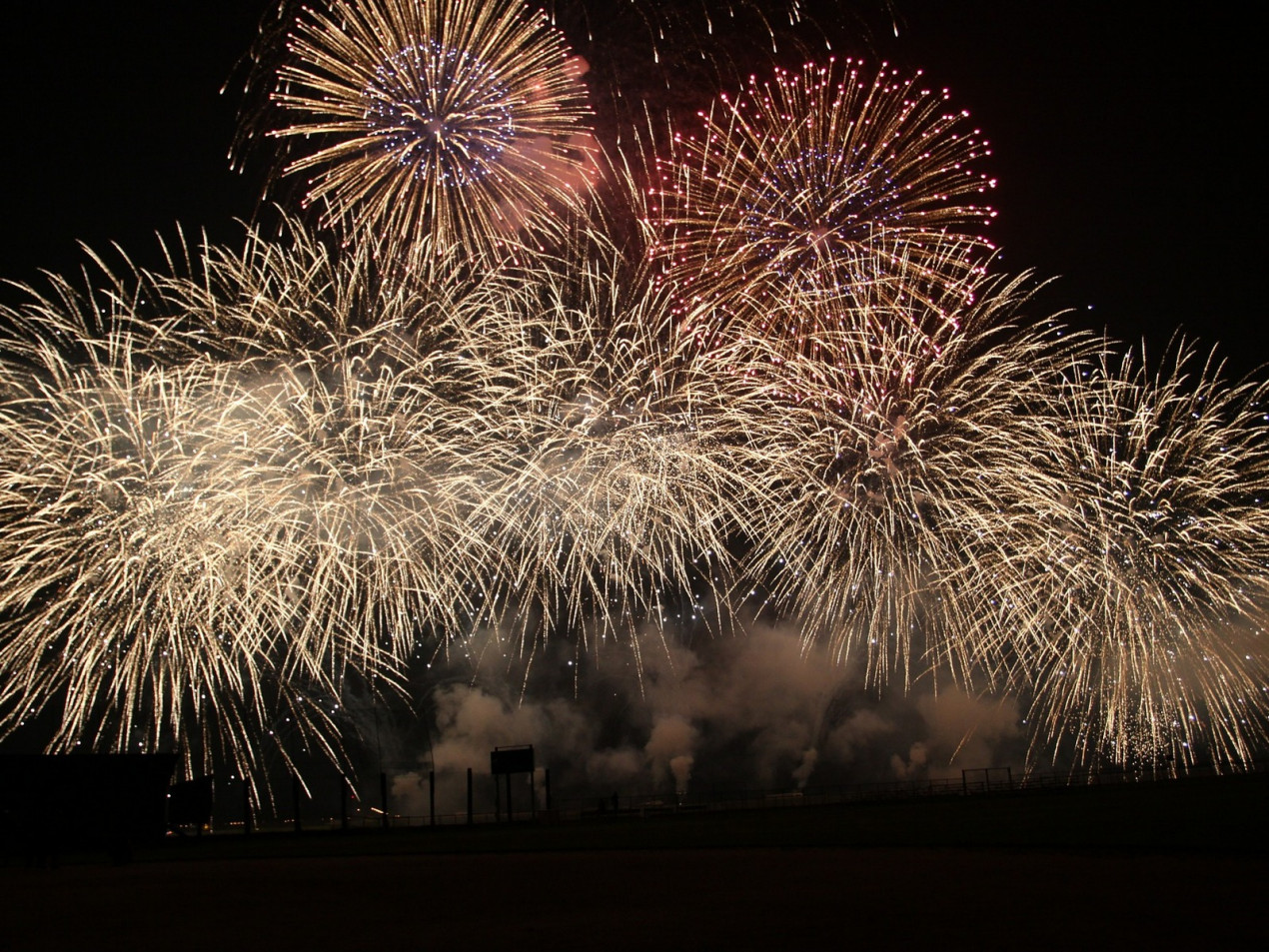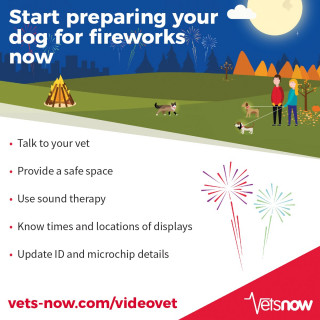
How to get dogs used to fireworks before they start
There are fewer things worse for dog owners than seeing their pet in distress. That’s why 5th November is a night many dogs and owners would rather forget.
While fireworks season may never be your dog’s favourite time of year, taking steps to prepare them in the weeks and months leading up to bonfire night can help make the whole experience less traumatic.
Bonfire night might seem like a long way off, but this is the ideal time to start preparations for your pet.
Here, our emergency vets share their tips for preparing dogs for fireworks.
If you would like to talk through ways to prepare your dog for fireworks you can video chat with our vets between 8am and 11pm every day. Find out more about our video vet service and book an appointment here.
Keep in mind that if your dog suffers from severe noise phobia you should not attempt any measures without speaking to your vet as they will be able to advise you based on your dog’s specific needs.
We offer one-to-one video consultations
Here for you every day from 8am to 11pm
1. Talk to your vet
If your dog suffers from fireworks anxiety it’s a good idea to speak to your vet about the best way to get them used to the loud noises. They may be able to recommend products (such as thundershirts or calming collars and plugins) or medication that may help to reduce anxiety. In some cases, they might recommend a professional animal behaviourist to help your pet handle their fear.
2. Provide a safe space
When dogs are anxious they often look for a safe space to take themselves off to. If your dog doesn’t already have a ‘den’ or secure space where they can relax, now might be the time to create one for them. This gives them time to start getting used to the space so that by the time November comes around, they have a designated place that they associate with comfort and safety.

You might also be interested in:
3. Use sound therapy
Sound therapy aims to desensitise your dog to fireworks by gradually exposing them to the noises over time. There are lots of products available, including free sound-based treatment programmes from Dog’s Trust. You should start by playing the sounds for a short time on a very low volume and gradually increase the length and volume every day. This should encourage your dog to accept these sounds as a normal part of their environment rather than something they should be afraid of.
4. Be aware of times and locations of fireworks displays
Find out when displays will take place in your area by checking council websites and local social media groups. Being aware of when to expect fireworks will help you take steps to support your pet during the display itself.
5. Ensure their ID and microchip details are up to date
Unfortunately, at this time of year we often see dogs that have run off after being spooked by fireworks. In the event that this happened to your dog, the best chance of being reunited with them is by ensuring that their ID and microchip details are up to date.

